906972
F-M
≥98%
동의어(들):
4,4,7,7,12,12-octyl-7,12-dihydro- bis[methylidyne(3-oxo-methyl-1H indene-2,1(3H)-diylidene)]]bis-4H-thieno[2″,3″:1′,2′]indeno[5′,6′:5,6]-s-indaceno[1,2-b]thiophene, FTIC-C8C8M
About This Item
추천 제품
설명
Band gap: 1.72 eV
Band gap: Eg = 1.72 eV
Solubility: Soluble in Chloroform, CB and ODCB
분석
≥98%
양식
solid
오비탈 에너지
HOMO -5.42 eV
LUMO -3.70 eV
SMILES string
[s]1c2c(cc1\C=C%10/C(=O)c%11c(cccc%11)C/%10=C(C#N)C#N)C(c3c2cc4c(c3)c5c(cc6c(c5)C(c7c6[s]c(c7)\C=C8/C(=O)c9c(cccc9)C/8=C(C#N)C#N)(CCCCCCCC)CCCCCCCC)C4(CCCCCCCC)CCCCCCCC)(CCCCCCCC)CCCCCCCC.CC.CC
InChI key
XPHYXDLZYTYOBX-OMQJLYAYSA-N
일반 설명
애플리케이션
Tandem Cell Device performance:
ITO/ZnO/PFN-Br/PBDB-T:F-M/M-PEDOT/ZnO/PTB7- Th:O6T-4F:PC71BM/MoO3/Ag
Voc=1.642 V
Jsc=14.35 mA/cm2
FF=73.7%
PCE=17.3%
Storage Class Code
11 - Combustible Solids
WGK
WGK 3
Flash Point (°F)
Not applicable
Flash Point (°C)
Not applicable
가장 최신 버전 중 하나를 선택하세요:
이미 열람한 고객
문서
Professor Chen (Nankai University, China) and his team explain the strategies behind their recent record-breaking organic solar cells, reaching a power conversion efficiency of 17.3%.
Global Trade Item Number
| SKU | GTIN |
|---|---|
| 906972-100MG | 4022536040691 |
자사의 과학자팀은 생명 과학, 재료 과학, 화학 합성, 크로마토그래피, 분석 및 기타 많은 영역을 포함한 모든 과학 분야에 경험이 있습니다..
고객지원팀으로 연락바랍니다.
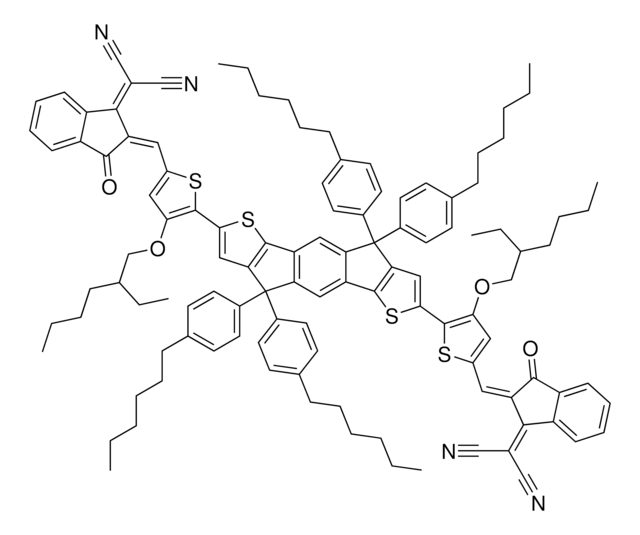
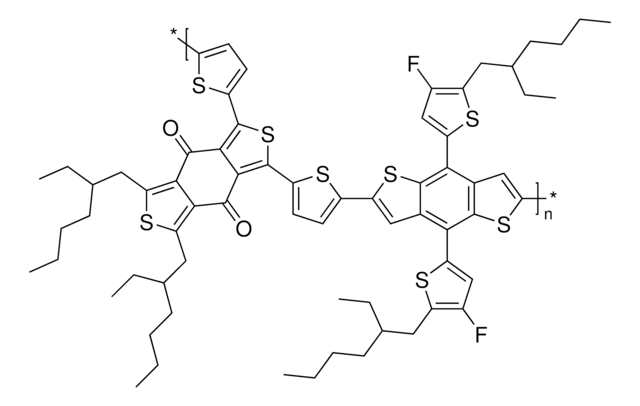
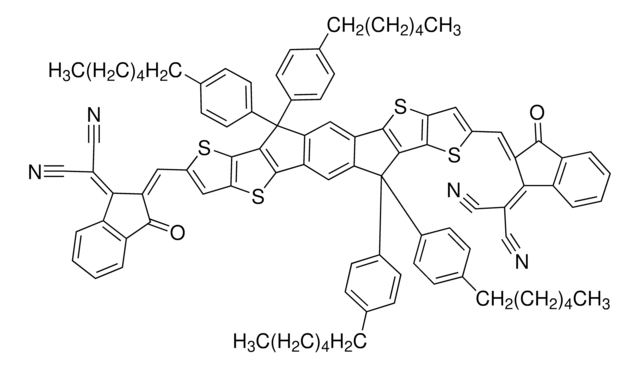
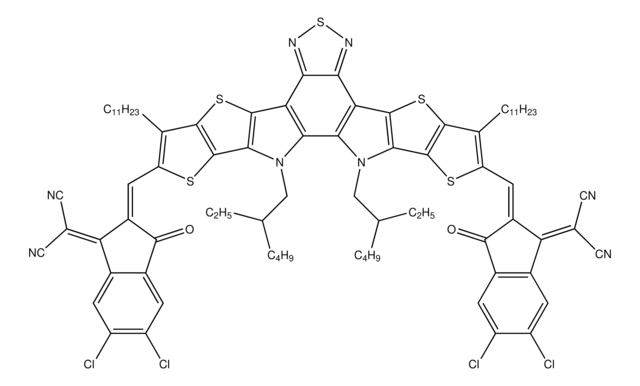
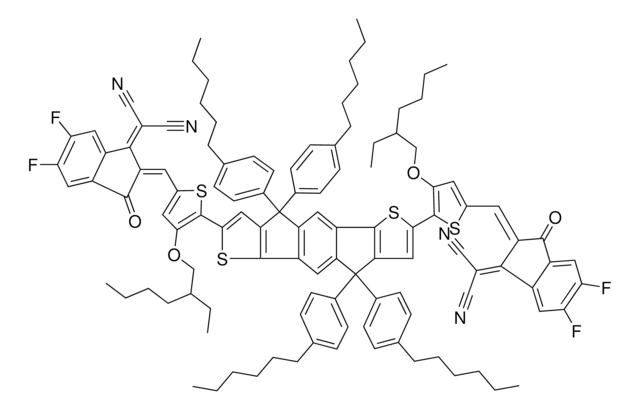

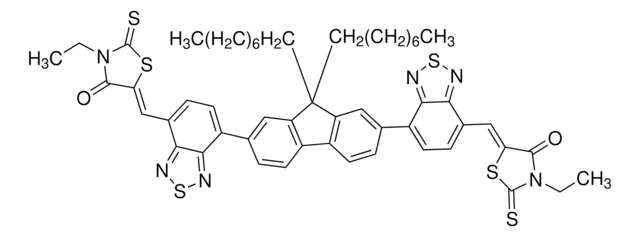

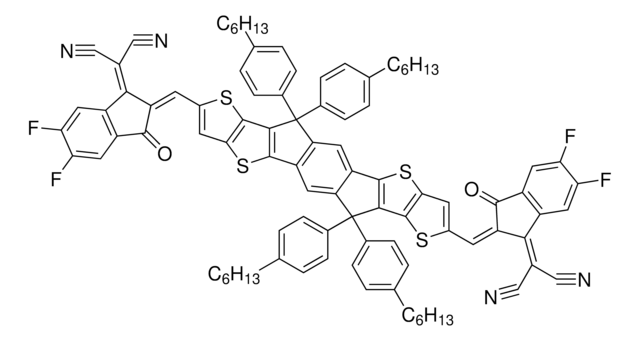
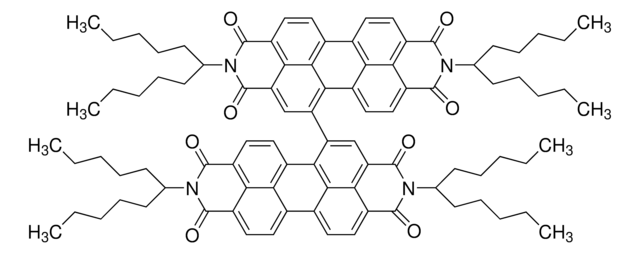
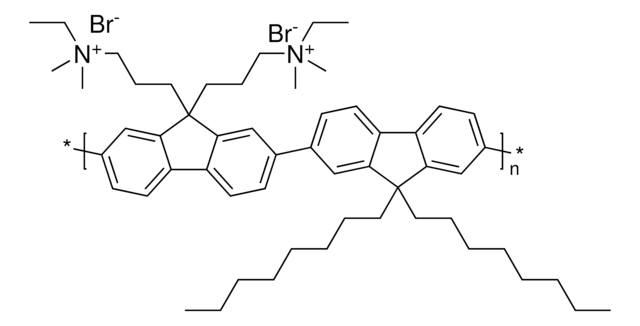
![[6,6]-Phenyl C71 butyric acid methyl ester, mixture of isomers 99%](/deepweb/assets/sigmaaldrich/product/structures/716/624/9fb9f2f0-ae99-429f-8d3a-b12267976a4d/640/9fb9f2f0-ae99-429f-8d3a-b12267976a4d.png)